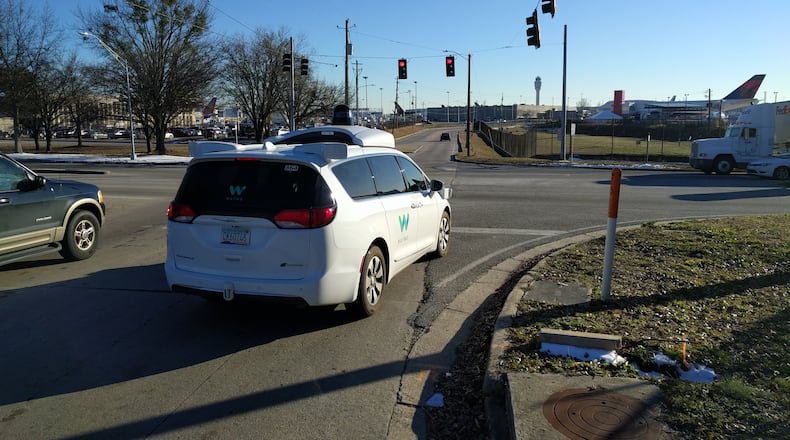Last week in this space we discussed the looming possibility of a total hands-free requirement for Georgia drivers using mobile devices behind the wheel. Brand new testing in metro Atlanta frees those same hands from the steering wheel and takes a driver’s feet off of the pedals, sources told WSB and the AJC exclusively.
Waymo, Google parent company Alphabet’s autonomous vehicle division, has just begun on Thursday mapping metro Atlanta roads. The governor’s office says this puts Georgia at the forefront in this technology.
“With our talented workforce and legacy of innovation, Georgia is at the forefront of the most dynamic, cutting edge industries like autonomous vehicles,” Gov. Nathan Deal said. “We are thrilled to welcome Waymo to our state because fully self-driving vehicle technology holds tremendous potential to improve road safety, and we are proud Georgia is paving the way for the future of transportation.”
Waymo uses autonomous cars - that is cars that can drive themselves, but people pilot them during the mapping phase. These cars, which in Atlanta are white Chrysler Pacifica vans with Waymo logos, have lasers that create 3D maps of the roads, curbs, signs and other features. This creates a backbone program that can allow vehicles to drive without any human assistance. These vans create more intricate views than the vans you may have seen before** from Google, which create the Street View on Google Maps.
After mapping some parts of Metro Atlanta, they hope to begin testing these vehicles driving themselves. Waymo has not yet released details about this testing.
In September, I rode along in a self-driving Tesla on the North Avenue smart corridor - a stretch of road redesigned with traffic signals and other features that communicate with smart cars and smartphones. The ride in that autonomous Tesla sold me on the abilities of self-driving technology. Between the detailed mapping and the car’s response to its 360 degrees of cameras, smart cars really could be a big step in lessening traffic congestion and decreasing wrecks.
Waymo’s technology is a step further than current autonomous cars on the road, in that it is aiming for what those in the industry call “level four and level five” abilities. Self-driving cars on the market now still call for some human assistance behind the wheel. The next phase of that is vehicles where the “driver” could just chill in the backseat. That’s level four.
The level five phase, those in the industry say, is similar to level four, but allows for this completely “human-less” driving in any kind of condition and in any place.
Waymo currently has autonomous vehicle testing in 24 cities and in Arizona. In Arizona they will deploy driverless cars for ride-hailing later this year. That is the next play for Waymo: someone ordering a ride and then being picked up and dropped off with a driverless car.
Since 2009, Waymo has been testing this technology and they have used it in production model cars, but also have created their own vehicles. That truly makes them an autonomous, autonomous car company.
But autonomous car-use is still miles away from mainstream. People enjoy the independence of driving, but that urge seems to be waning. Drivers are pining to use other devices and do other things behind the wheel. A big roadblock for this technology is the cost, which right now is high. And another is in this transitional phase, where human drivers and robots are in the same space. Autonomous cars reliably react to other cars, no matter who is driving. But the environment works best when the cars can communicate with each other and make traffic move better.
Studies show that about 94 percent of crashes involve human error. Aside from convenience, self-driving cars can make commuting safer. And that may be the biggest win in all of this. From a Waymo spokesperson, “Now that we have the world’s first fleet of fully self-driving cars on public roads, we’re focused on taking our technology to a wide variety of cities and environments. We’re looking forward to our testing in metro Atlanta and bringing this lifesaving technology to more people in more places.”
About the Author
The Latest
Featured

